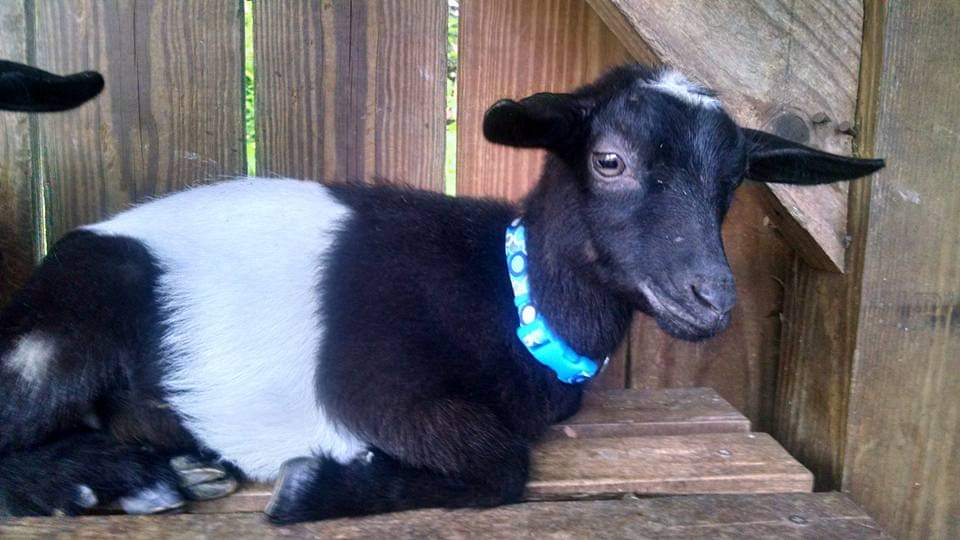
Delilah, 2016-05-28 – 2020-08-03

Plants and animals in the Piedmont, North Carolina

I do not seem to be capable of composing a blog post after everything else on a Saturday.
1. Campanulastrum americanum
Wintersown last winter. This native plant can behave as an annual or a biennial. I didn’t fully expect this to bloom until next year. Interestingly, the two that are sending up big flowering spikes were among the second wave I planted out in spring. All of the first wave and some of the second are still just foliage rosettes.
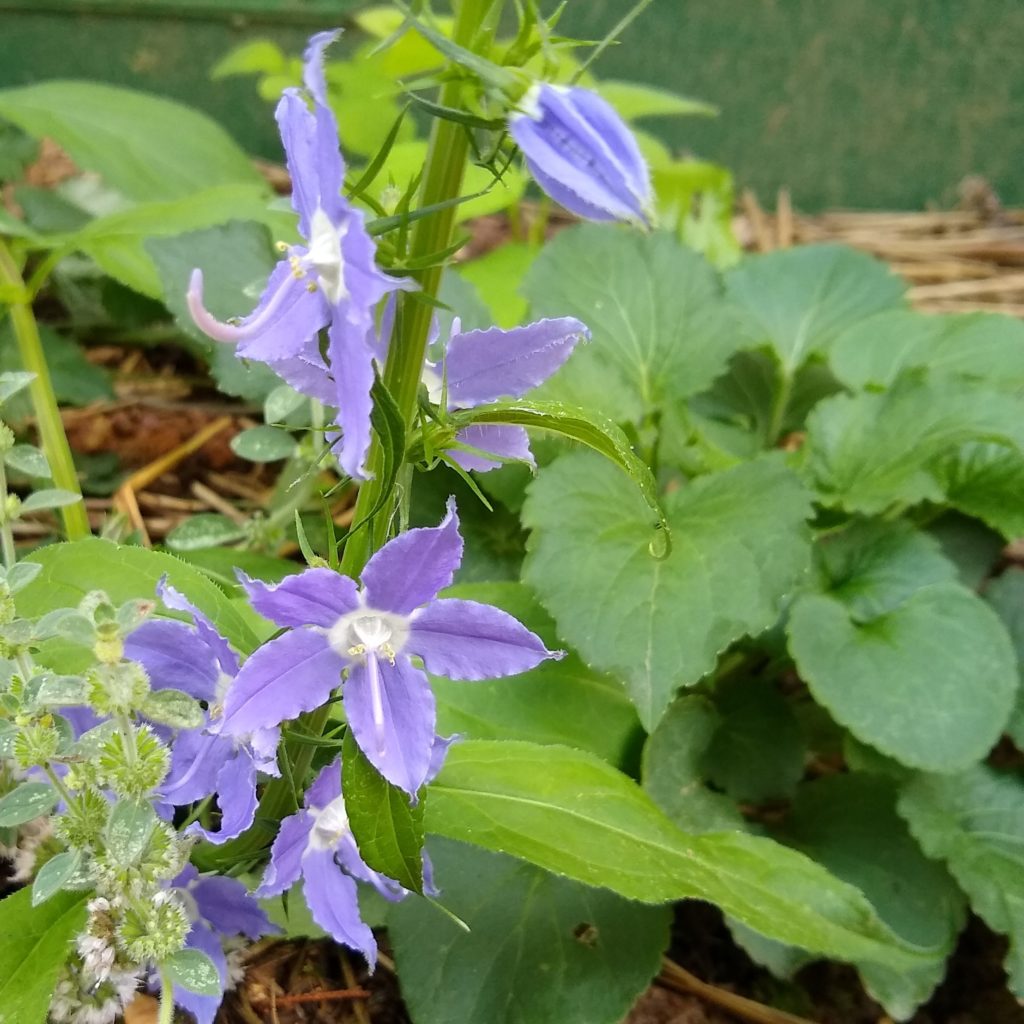
2. Agarista populifolia, now in a trash bag
I bought this lovely native shrub from N.C. Botanical Garden plant sale last fall. It was a really good fit for a very shady area. I enjoyed its gracefully arcing, interestingly colored foliage all winter and beyond.
Unfortunately I did not realize this plant produces grayanotoxin I. This is the same toxin produced by rhododendrons and azaleas, which I knew not to plant because I have goats. (And also because azaleas are gaudy as hell)
I don’t have a regular escape-goat problem, but it does and will happen occasionally. On July 19 the goats broke through a gate. My tiny Delilah ate at least one branch of this plant. The next morning she would not eat her breakfast and was scouring. She hung on for two weeks with lots of supportive care. A couple of times she seemed to be pulling through, but she ultimately died overnight last Sunday/Monday.
I ripped this shrub out yesterday and feel horrible about everything related to it.
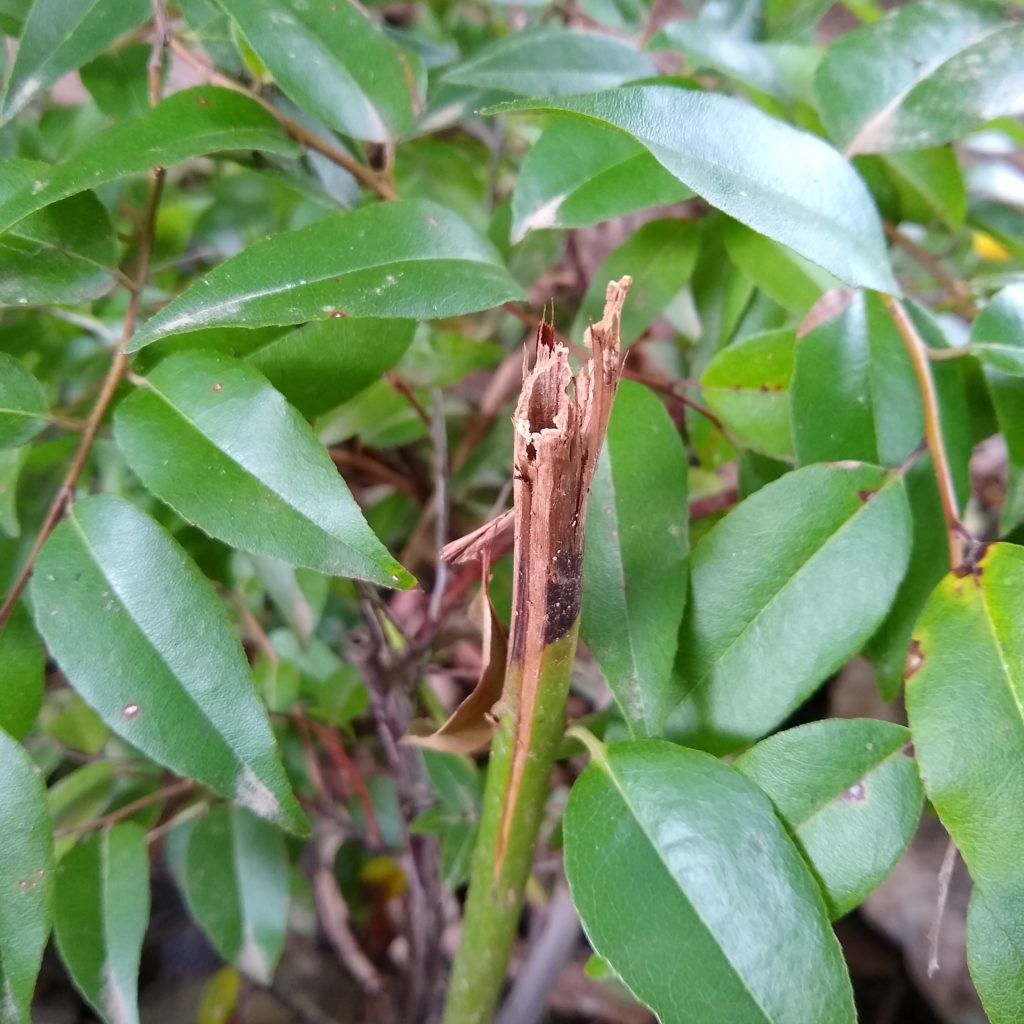
3. Working goats
Since Delilah got sick I’ve been afraid to put Gimlet, Toddy, and Emerson anywhere other than their primary pasture.
But, I got goats to help eat brush, so I needed to be able to put them back to work eventually.
Yesterday I took a deep breath and put them in this privet, wild grape, honeysuckle, greenbrier, and poison ivy infested spot.
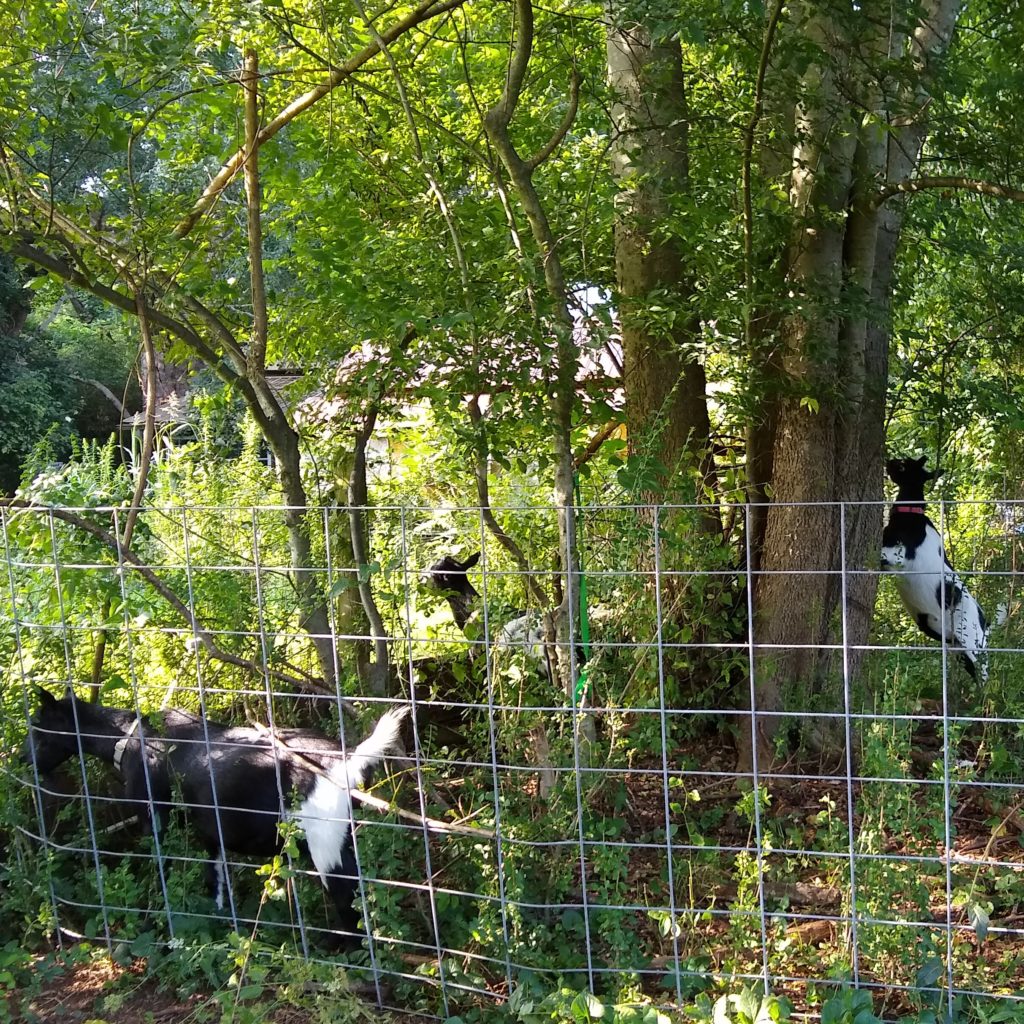
4. Celosia argentea var. cristata ‘Tornado Red’
Self-sown volunteers this year. I wish they were more a deep red than a magenta, but I still love them.
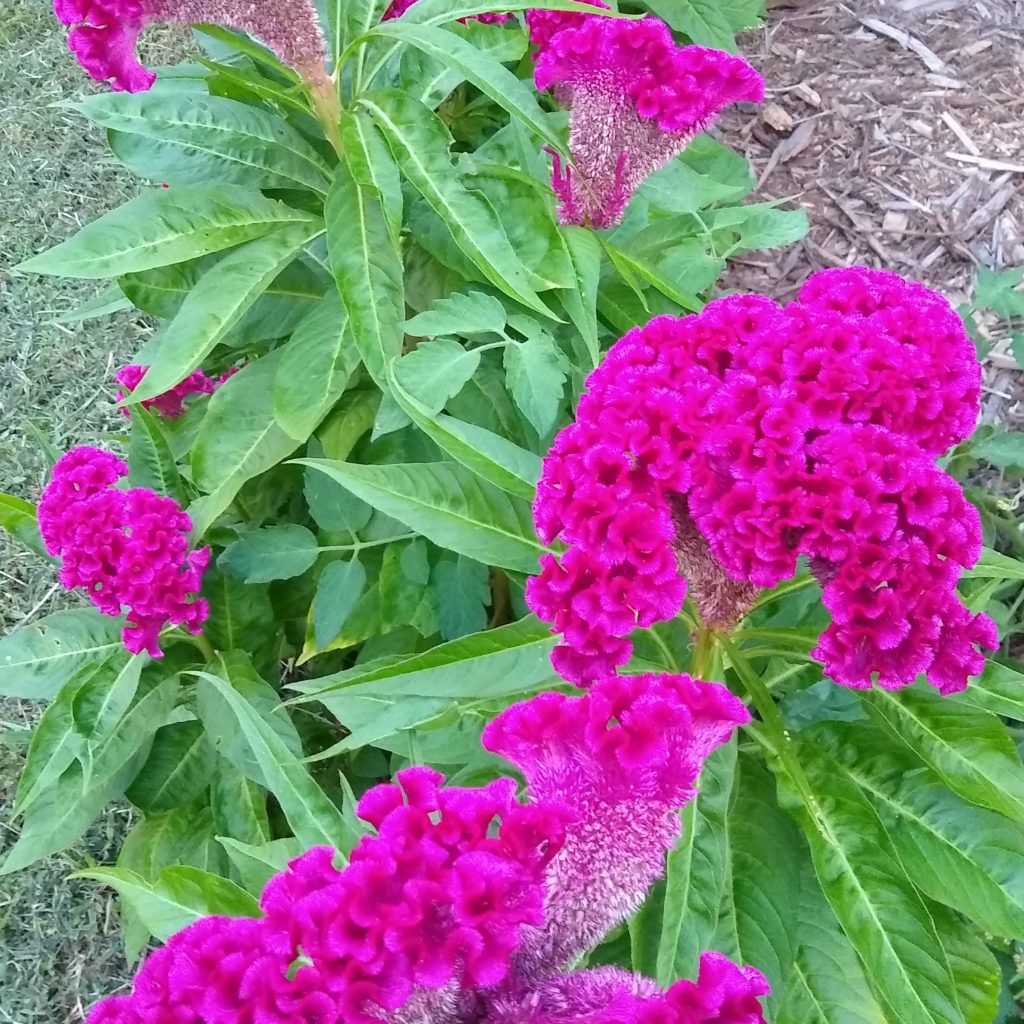
5. A view
This is such a crappy photo but it captures a view I’ve been enjoying. I like the punctuation-like structural effect of growing indeterminate tomatoes pruned and staked. This is my first year trying it and they do need more attention/care (and netting to protect the fruits from chickens/turkey), but they sure are easier to harvest and are not a sprawling monstrous heap going everywhere. I’m afraid I really do prefer a mostly neat, controlled looking garden, but lack the staff to maintain one! I was considering taking out the irises because their flowers are a disappointing sad old-dishrag-yellow, but I really do appreciate the textural contribution of their lovely leaves all summer. Butternut squash rambling everywhere in the foreground. The asparagus patch creates a nice, soft, smoky backdrop.
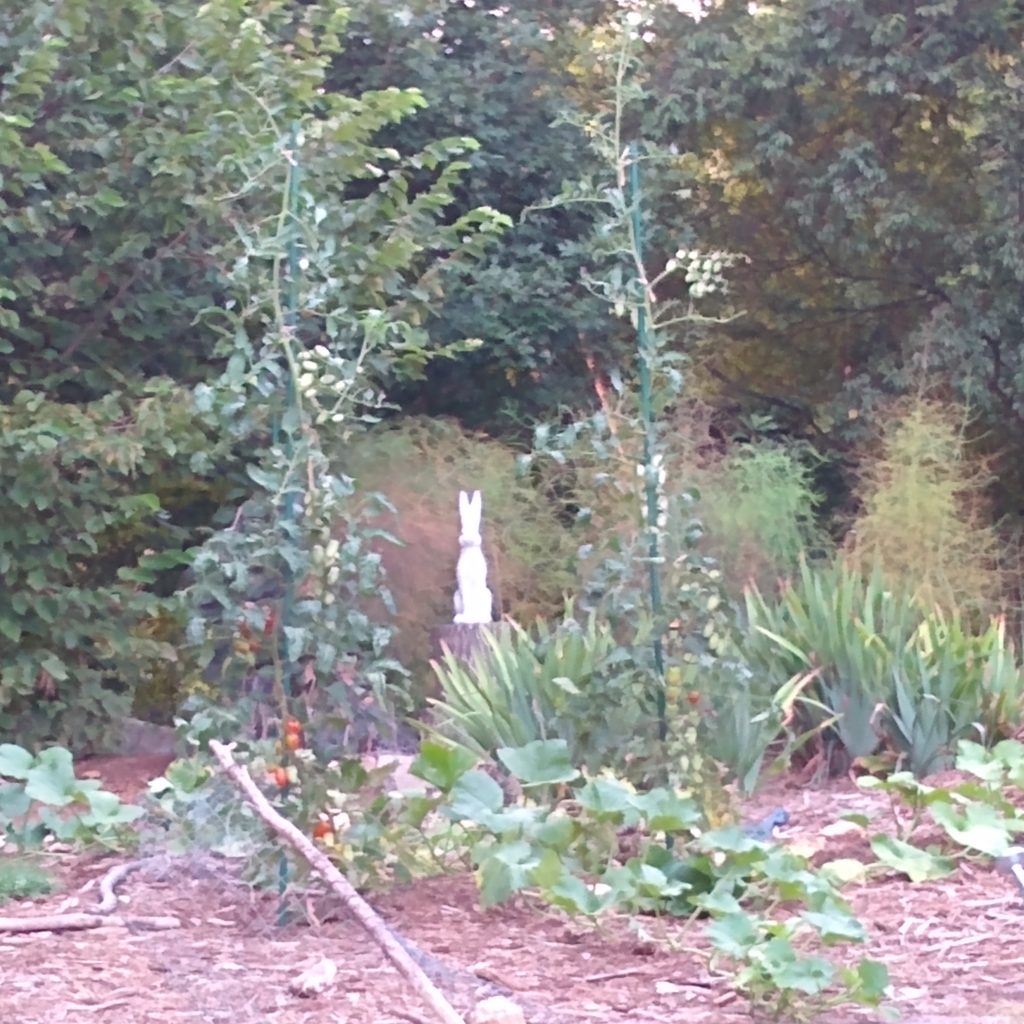
6. Spalding Labs Fly Predators, second shipment
A month and a half or so ago the flies were getting out of control and so annoying.
I’ve noticed a definite decrease in flies since putting out my first shipment of these guys. But it is a whole summer-long regimen to break the fly lifecycle and keep populations down. So this is batch two, which, unlike batch one, smelled like dirty socks. Whatever.
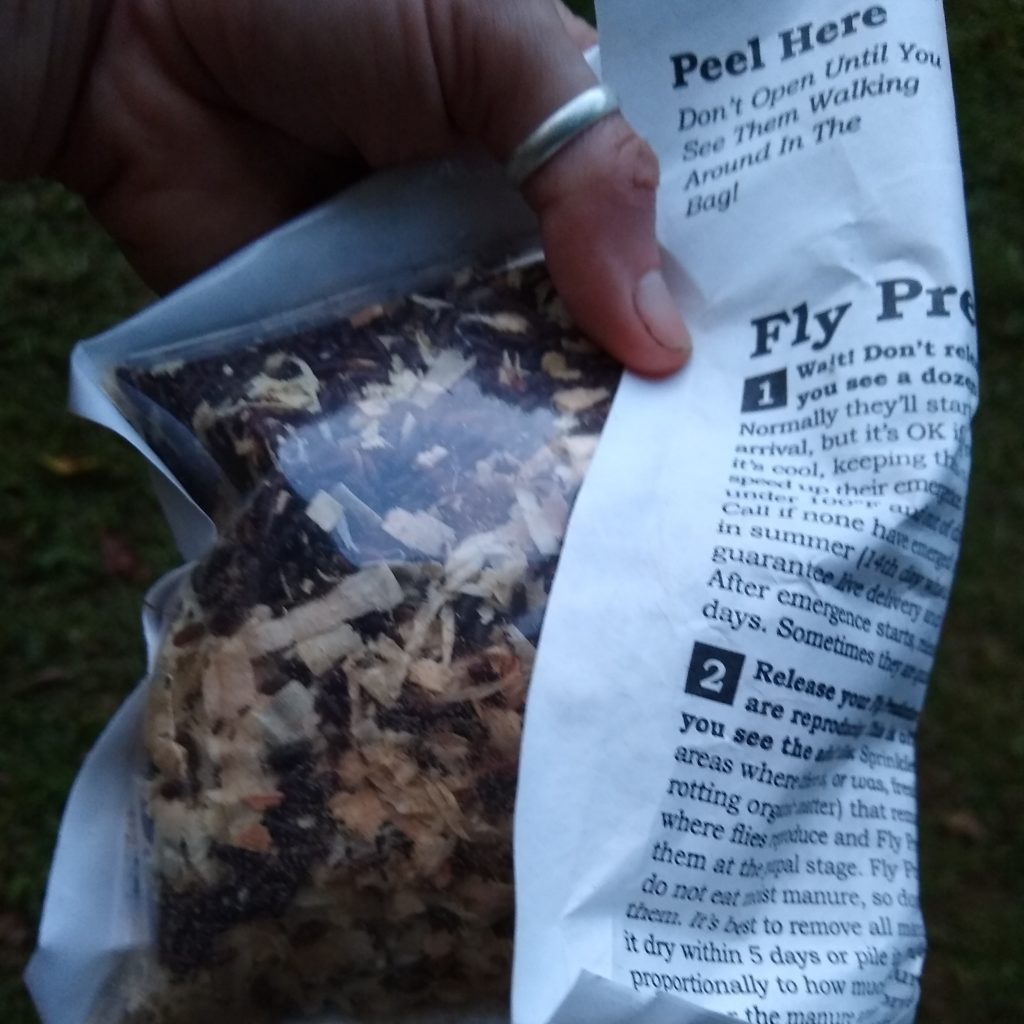
Six on Saturday is hosted by The Propagator.
I mean, I knew that goats were smart. It’s obvious. Christian Nawroth’s research (and that of others) continues to prove it.
But my goats recently surprised me. Let me tell you the story.
The goat shed gives the four Nigerian Dwarf goats access to the large pasture. (Large here is relative—the whole property is ~1.25 acres!) There is a small fenced area on the other side of the house from the goat shed that I haven’t done anything with, so when the weather is nice I move the goats over there.
My initial method of moving the goats there and back was:
So, I had a bad fall in some mud on one of these mad runs back in the early spring and it kind of scared me. At some point I have to take getting older and the increased fragility from certain conditions seriously and start acting like it, right? Sigh.
At that point I modified the above procedure to move one goat at a time. I would start with Gimlet first and put him back last, because he is better than the others about walking on a leash.
And that was some better, but ye gods, for being so small, these goats are freakishly strong, and the three who are not moved first are Highly Motivated to re-form the herd, and they run FAST. Then I got a repetitive stress injury in my elbow (due to something else unrelated), and tried to move the goats using only one arm, and I decided this was all ridiculous. I could not continue letting goats drag me around in a dangerous manner.
The goats must learn to walk in a calm, controlled way between their enclosures!
Cue laughter
The first time I moved them after deciding this, I had treats in my pocket. As soon as a goat began to rush ahead, pulling on the leash, I just dropped to the ground and sat there until they quit pulling at the leash and turned their attention to me. Then I gave a treat.
For each goat other than Gimlet, I estimate it took about 12 stop-starts like this to make to the smaller pasture.
Going back to the shed in the evening, they are more likely to run like hell because that’s home and it is getting dark-ish and they are not in it. But we still managed to get there with only about 9 stop-starts.
That day was the only day I did this with treats. I moved them again the following weekend, with fewer stop-starts needed each time. And then yesterday morning with even fewer.
And then yesterday evening I was so proud of them! We all went back to the goat shed with NO STOP-STARTS. Just calm walking next to me!
So, that was six training sessions. Two per day, but the days were each a week apart. And they learned! SMART GOATS!
I have no illusions that all future transfers will go so smoothly, but I’m really proud of them and pleased at their progress.